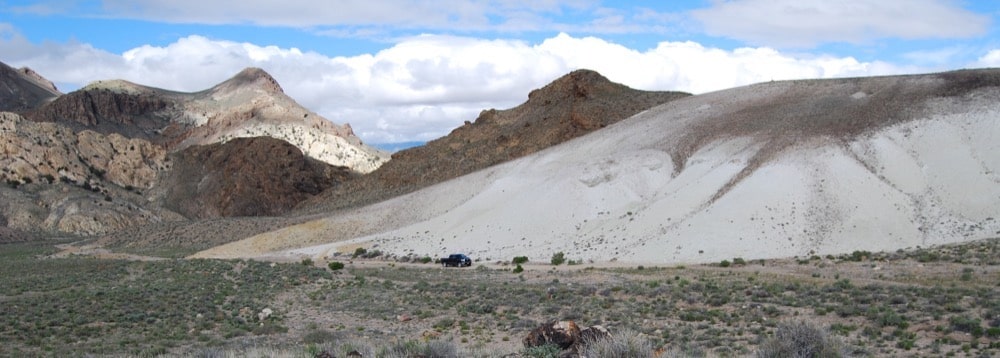The U.S. Bureau of Land Management (BLM), under President Biden’s administration, has nearly completed the regulatory process for Ioneer’s Rhyolite Ridge lithium project in Nevada, one of the largest lithium sources in the U.S.
BLM’s decision follows a six-year review aimed at boosting U.S. critical mineral production and reducing China’s dominance in battery metals. Once fully approved, the mine will become a key supplier of lithium for the U.S. electric vehicle (EV) market, with the capacity to power up to 370,000 EVs annually.
Rhyolite Ridge is one of two advanced lithium projects in the U.S. and is fully funded for a Final Investment Decision. It is expected to be a low-cost lithium site due to its valuable boron co-product and innovative cost-saving measures in its sustainable operations. Subsequently, it will produce lithium carbonate by processing materials on-site rather than shipping them elsewhere. This approach is crucial for the EV battery supply chain.
LATEST: EIA Expects Explosive Growth in U.S. Battery Storage—Can America Ascend to Dominance?
The proposed Rhyolite Ridge lithium mine by Ioneer has sparked a heated debate. While it promises economic and environmental benefits through the production of critical battery metals, it also threatens a rare plant species, Tiehm’s buckwheat. This is why conservationists and mining advocates are locked in a tug-of-war over the project’s future.
The Economic Promise
Proponents of the Rhyolite Ridge mine argue that the project is vital for U.S. energy independence and the growth of the electric vehicle market. As one of the largest lithium mines in the U.S., it could support the production of a massive number of EVs each year. Simply put, the Nevada lithium project is a major step forward to reduce carbon emissions and shift to clean energy.
Ioneer’s Chairman, James Calaway, highlighted the project’s potential contribution to the clean energy transition, stating,
“We can protect the flower and still produce the critical minerals needed for EV batteries.”
Source: Ioneer
The Environmental Challenge
Conservationists, however, have raised concerns about the mine’s environmental impact. The endangered Tiehm’s buckwheat flower, which grows only in the region near the mine site, has become a symbol of this fight. The flower was discovered in the 1980s and is found on federal land near the Nevada-California border. Environmental groups claim that the mine’s operations will endanger the fragile plant, pushing it closer to extinction.
In 2020, more than 17,000 rare flowers mysteriously died near the proposed mine site. Conservationists accused Ioneer of intentionally destroying the plants, but the company denied the allegations. Surprisingly, the U.S. Fish and Wildlife Service (FWS) later attributed the deaths to thirsty squirrels. However, environmentalists successfully pushed for the flower to be listed as endangered under the Endangered Species Act.
The FWS responded by designating 910 acres near the mine as a protected area to preserve the flower’s habitat. While this move helps protect the species, it does not completely halt the mining project. The debate continues over whether these measures are enough to ensure the flower’s survival.
Can Conservation and Mining Coexist?
Ioneer firmly believes that it can protect Tiehm’s buckwheat without compromising the mine’s operations. The company has adjusted its plans to limit the impact on the flower’s habitat. In addition, Ioneer has proposed a propagation plan to grow and transplant the flowers nearby. Calaway insists that these measures will not affect the mine’s production and remains confident that the project can proceed sustainably.
Environmental groups, however, remain unconvinced. Patrick Donnelly from the Center for Biological Diversity argues that the mine’s plans still threaten the flower’s survival, stating,
“The mining company’s plans run afoul of the Endangered Species Act.”
Donnelly further added that the project would destroy much of the plant’s critical habitat. Critics emphasize the irreplaceable nature of Tiehm’s buckwheat and argue that no amount of mitigation can undo the damage.
As the project moves through its final stages of approval, the debate between economic progress and environmental preservation is far from over. The question remains: Can the U.S. secure its lithium supply without sacrificing its biodiversity?
BLM Director Tracy Stone-Manning has also assured,
“This environmental analysis is the product of the hard work of experts from multiple agencies, to ensure we protect species as we provide critical minerals to the nation. We’re steadfast in our commitment to be responsible stewards of our public lands as we deliver the promise of a clean energy economy.”
The Road Ahead for Ioneer’s Rhyolite Ridge Lithium Project
The Rhyolite Ridge lithium project, backed by BLM’s approval, still faces hurdles before moving forward. The next phase includes a public comment period and the release of a final environmental impact statement. After these steps, a decision on the mining permit is expected within 30 days.
This project reflects the challenge of balancing economic growth with environmental protection. The BLM, in coordination with state and tribal authorities, has worked to address concerns while ensuring the project supports the Biden administration’s clean energy goals. The U.S. government has increasingly focused on critical mineral production, aiming to boost domestic supply and reduce reliance on imports.
Rhyolite Ridge, along with the Thacker Pass project, is key to increasing lithium production for EV batteries and energy storage solutions in the U.S. Reuters reported that Ford and a joint venture between Toyota and Panasonic have already agreed to buy lithium from the mine. However, the ongoing debate around environmental impacts, including the preservation of the rare Tiehm’s buckwheat flower, underscores the tension between conservation and the push for a green economy.
Disclaimer: Research sources:



